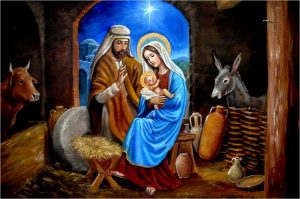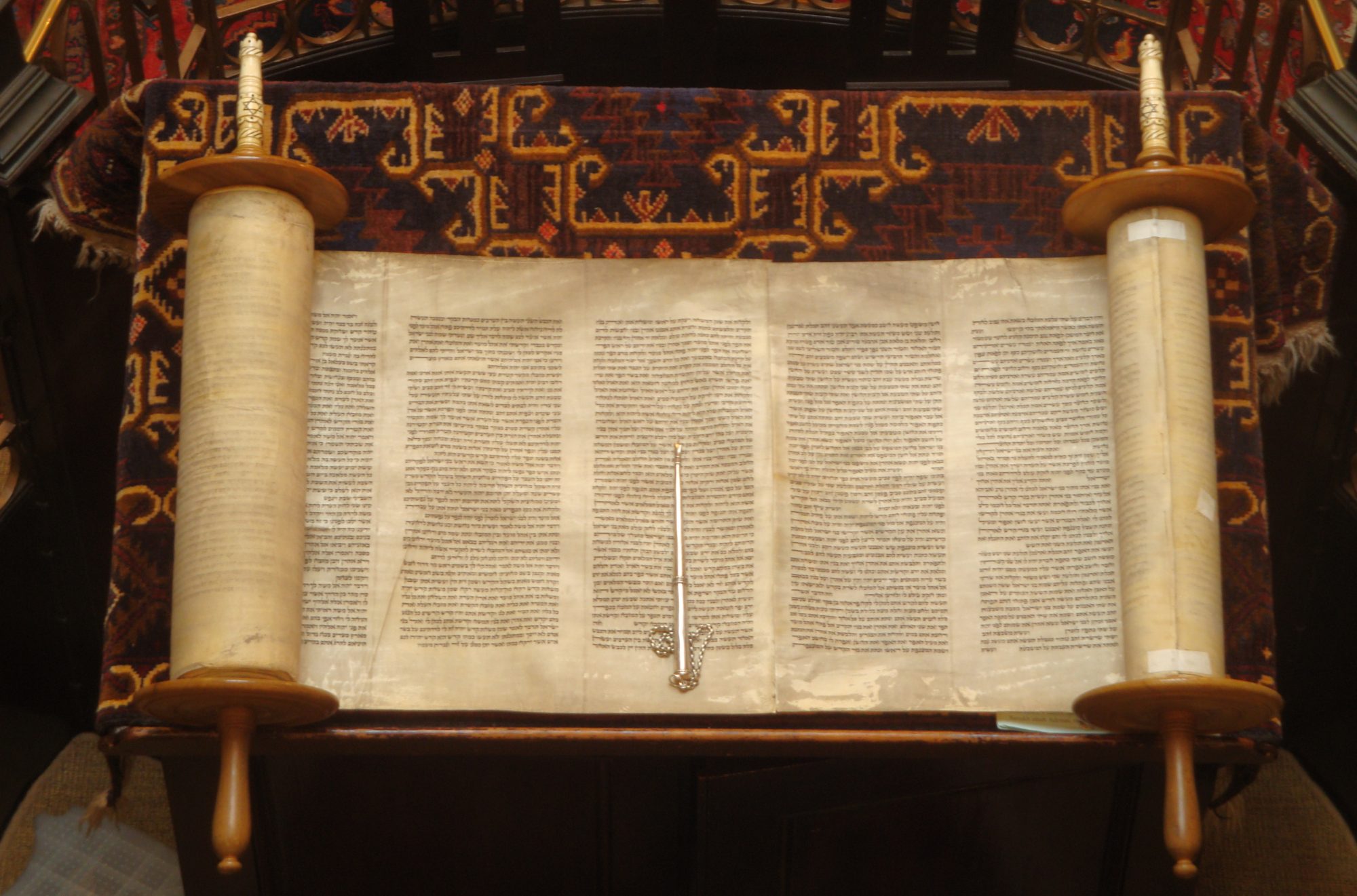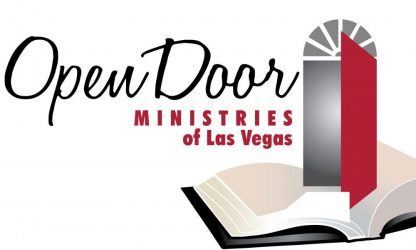
On December 10th, 2017, I was invited by Pastor Blair Cuares of The Word fror Everyone church in Davao City, Philippines, to preach a message about the birth of Jesus. What follows, with the exception of the End Notes, is the text of that preaching.
As we approach Christmas, the birth of Jesus takes center stage. Of the four Gospel accounts, only two speak about this event, Matthew and Luke. When Pastor Blair approached me last week about addressing you today, he mentioned that he wanted something “different.” Since he spent a good deal of his sermon last week examining the obedient behavior of Jesus’ parents, Joseph and Mary, in the Book of Luke, I’ll take that to mean that he’s leaving the Matthew account to me.
What Pastor Blair may also have meant when he wanted something “different” was that he wanted an “Hebraic” approach, and as such, the Book of Matthew is probably an excellent fit. There are over 5000 known Greek manuscripts of the Book of Matthew, compared to less than 30 written in Hebrew, mostly pertaining to a 14th-century Hebrew translation known as the Shem Tov Matthew. However, a number of early Church fathers–Papias, Origen and Eusebius–all considered the original Book of Matthew to have been authored in Hebrew.[1] Although there are differing views over the dominant language of 1st Century Judea–the land that Jesus walked–there has emerged mounting evidence that Hebrew, not Aramaic, was that language.[2] This evidence includes the vast majority of Biblical texts found in 1947 in the caves of Qumran, otherwise known as the Dead Sea Scrolls, that were printed in Hebrew. Also among the findings at Qumran were non-Biblical texts known as pesharim, used to teach the Scriptures to the common man of Jesus’ time. They are all in Hebrew. Of 100 Semitic-language coins in 1st Century Judea, 99 were minted in Hebrew compared to one in Aramaic. Of the 700 pottery fragments found at Mosada–the climactic battle location of the failed 70 A.D. Jewish revolt against the Romans–Hebrew inscriptions outnumber Aramaic ones by a ratio of 9 to 1.
So, with all this in view, we read Matthew primarily relying on the Greek text, with a keen eye for Hebrew word equivalents that may have been used by the earliest readers of the book.
One more thing before we launch into the Matthean text. . .all of us are seeking a connection with God. The paths we take can be different. Some of us connect with God primarily through prayer. Others, as Pastor Blair emphasized last week, make their connection with God primarily through obedience to God’s commands. Still others have dreams or visions or speak prophetically.
Many, including me, find their primary connection with God through the reading of His Word. I do not claim this to be a better connection, or more important than any of the others. Any connection to God is a great connection. However, when we seek to connect with God through His Word, then it’s important to allow the Word to speak to us. One way that we allow the God-inspired authors of Scripture to reveal what they intended us to understand is to identify how they arranged the text. We can start by looking at repeating words and ideas in the text of a passage. As we do this, we begin to cobble together the literary structure of a passage. Once we do that, we begin to discern what the God-inspired author intended for us to know.
The birth of Jesus is found in Matthew 1:25. Prior to that, in verse 24, Joseph, the earthly father of Jesus, awoke from a dream. The opening line of verse 24 reads: “And Joseph awoke from his sleep.” Question: is there a corresponding verse in which Joseph enters his dream? In verse 20, we find this: “But when he had considered this [secretly sending away the pregnant Mary, his betrothed], an angel of the Lord appeared to him in a dream, saying ‘do not be afraid to take Mary as your wife.'” Is the angel of the Lord mentioned elsewhere? Returning to verse 24, after Joseph awoke, the verse continues that Joseph “did as the angel of the Lord commanded him, and took Mary as his wife.”
As we identify correspondences in the text, a literary structure begins to emerge. What are these correspondences? First, Joseph fell asleep and entered a dream; this corresponds to Joseph waking up from his dream. Next, during the dream, an angel of the Lord (Gr.: angelos Kyriou) appeared to him “saying, do not be afraid to take Mary as your wife.” This corresponds to Joseph obeying the command of that same angel of the Lord (Gr.: angelos Kyriou) after he woke up and he “took Mary as his wife.” The word “take” appears in both corresponding verses. That word in Greek is paralambano meaning “aggressively taking from close alongside.” Joseph is portrayed here not as someone who gently acquiesced to the command of the angel, but rather as one who fully embraced the task assigned to him. What we’re observing in these correspondences is that the divinely-inspired author, in this case Matthew, has embedded a literary structure into the text of this passage about Jesus’ birth by first connecting what happened during Joseph’s dream to what happened after he awoke. And this literary arrangement points us toward other correspondences that ultimately lead toward the central meaning of the passage.
As we continue reading, what is the next correspondence that we find? In verse 21, the angel told Joseph that Mary “will bear a son.” This corresponds to the birth of Jesus in verse 25 in which we read: “she bore a son.” The English “will bear” in verse 21 and “bore” in verse 25 derive from the same Greek root, tikto, meaning to bring forth or beget, essentially to give birth.
We now reach the next correspondence in this literary structure. After Joseph was told by the angel in verse 21 that Mary will bear a son, he was also told “to call (kaleo) his name (onoma) Jesus.” This corresponds to verse 25 in which, upon the birth of his son, Joseph “called (kaleo) his name (onoma) Jesus.” And this circles us back to something very Hebraic about this passage, because in Hebrew, names mean things. A person’s Hebrew name reveals something very important about the person bearing the name–one’s name may point to a person’s origin, character and/or purpose. For instance, the name Adam means man but is very closely related to that from which man originated, the Hebrew adamah, meaning ground for “the LORD God formed a man (adam) from the dust of the ground (adamah).” (Genesis 2:7) The Hebrew name of Abel is Hevel, meaning vapor. Vapor does not attach to anything nor does it claim ownership of anything. That’s its “character.” This also being Abel’s character, he parted with the finest of his flocks when he made an offering to God. The Hebrew for Moses is Moshe, meaning to be “drawn out of water.” (Exodus 2:10) This not only looks back to his origin, having been drawn from the waters of the Nile River by Pharoah’s daughter, but also speaks to his divinely-set purpose, for it was Moses who would, as the agent of God, draw the nation of Israel from the waters of the parted sea, from enslavement to freedom.
One of the first usages of the Hebrew word for name, shem, is found Genesis 2:10, and reveals much about the meaning of the word. It reads: “Now a river flowed out of Eden to water the garden; and from there it divided and became four rivers.” In this verse, the word shem is not translated as name, but is translated as “there.” “But from there (shem) the rivers divided. . .” Shem is a source of something.
Turning to Jesus, his Hebrew name also means something as well as representing a source of something. That name is Yeshua, short for Yehoshua, meaning “YHVH saves.” This very meaning of the name, Jesus, sits near the center of Matthew’s literary structure, for in verse 1:21, when the angel of the Lord instructed Joseph to name his son Jesus, he adds: “For he will save his people from their sins.” This, in turn, corresponds to another name by which the Messiah is known–Immanuel–and the Hebrew meaning of which is given in verse 23, “God with us.” Based on the meaning of the name Jesus–in Hebrew, Yeshua–and the corresponding name in Matthew’s literary arrangement, Immanuel, the purpose for which Jesus was born is revealed, and that is that the “God with us” is the God who will “save His people from their sins.” When we celebrate Christmas–the birth of Jesus–we celebrate, first and foremost, this purpose.
Next, let’s look a little more deeply at the meaning of Jesus’ name. In Hebrew, his formal name is Yehoshua. That name is found 218 times in the Old Testament, mostly in reference to Joshua, the successor to Moses as the leader of Israel. Yeho is an abbreviated form of Yehovah, God’s most essential name, mentioned 6828 times in the Hebrew Scriptures and translated in most Christian bibles as LORD, in all capital letters. It is also a common prefix of Hebrew names of kings such as Yehoshaphat (YHVH judges) and Yehoiachin (YHVH establishes), and Yehonathan (YHVH gives), who we know as Jonathan, the eldest son of King Saul and dear friend of David.
The remainder of Jesus’ Hebrew name is based on the word, yasha, meaning to save. What exactly does it mean to save? Most people, when asked this question, immediately associate the word save with going to heaven or eternal life. Those are outcomes of salvation, but it is less important to know what the word has come to mean today than to know what it likely meant to the divinely-inspired author and the audience to whom he was speaking in his day. For it is through the text of the divinely-inspired author that we connect with the Divine Being. So, to discern the meaning of save, we need to look at the word itself in the context of ancient Hebrew. Yasha consists of three Hebrew letters: a yod (pronounced in English like a y), a shin (pronounced in English as a sh) and an ayin, which looks like an English y but has no verbal pronunciation. The 22 letters of the Hebrew alphabet are considered divinely ordered and as such, have a particular purpose and meaning underlying the order in which they appear in a given word. In addition, each letter is considered to mean something relating to its ancient expression as a picture of something. Such is the case here. Pictographically, the yod resembles a hand–not surprisingly, the word for hand in Hebrew is yadah, or in its shortened form, yad, and in its most primitive meaning, denotes a deed or action. The shin resembles teeth, and its primitive meaning is to consume or destroy. The ayin was at one time drawn in the form of an eye–the word itself means eye–and the meaning therein is to look upon something. Taken together, the yod is the hand that rescues, the shin is the teeth that destroy one’s enemy and the ayin is the eye of the rescued which gazes in reverence upon the one who rescues.
There are examples of the salvation “process” in both Testaments. One of the best is found at the end of Exodus 14. Here, as you well know, the Israelites were backed up against the sea with the Egyptian army, led by Pharaoh, in hot pursuit, seeking to destroy them. In verse 21, it reads that “Moses stretched out his hand (yad) over the sea” and the LORD parted the waters, providing safe passage for the nation of Israel. In verse 27, Moses again stretched out his hand, and the LORD caused the water to return, covering all the Egyptians so that in verse 28 it reads that “not even one of them remained.” Not a single Egyptian who entered the sea survived. In verse 31, it reads “And Israel saw the great work the LORD did against the Egyptians and the people feared the LORD.” The word translated as work is in Hebrew, yad, that is, hand. The word translated as “feared” is yare, which in this context means “revered.” So the eyes of Israel gazed in reverence upon the great hand of the LORD that utterly destroyed their enemy. The hand that rescues, the destruction of the enemy, and the eye that gazes upon the rescuer, yod-shin-ayin, the letters of the word yasha, are all present in this passage. In verse 30, it states: The LORD saved Israel that day.” The word “saved” in that verse is based on the root word, yasha.
When Matthew, a 1st-Century Jew, likely authored his gospel in Hebrew and used the word yasha, this is what it meant to be saved. When he said that Jesus was born “to save his people from their sins,” it meant that by Jesus’ hand, his people would be rescued, by that same hand, the enemy, sin, that which aims to destroy us would itself be destroyed, and the people would look upon He who rescues with reverence as their savior. His very name, Yehoshua, given to him at birth, meant that he was the source of salvation for all mankind. And he is the one we revere in this Christmas season.
END NOTES
[1] “Matthew put down the words of the Lord in the Hebrew language, and others have translated them, each as best he could.”—Papias, mid-2nd Century A.D.
“Matthew, indeed, produced his gospel written among the Hebrews in their own dialect.”—Irenaeus, (120-202 A.D.)
“The first [gospel], composed in the Hebrew language, was written by Matthew. . .for those who came to faith from Judaism—Origen, (first quarter of the third century)
These quotes were recorded by Eusebius, a Roman historian, in his book Ecclesiastical History. who would later become the Bishop of Caesarea in Palestine in 314 A.D. He made his own comment below:
“Matthew had first preached to the Hebrews, and when he was about to go to others also, he transmitted his gospel in writing in his native language.”
[2] In 1947, the year of Israel’s rebirth as a country, the Dead Sea Scrolls were discovered in twelve caves near the site of Wadi Qumran in what is known as the West Bank today. Included among the findings were 179 manuscripts, some very fragmentary, of every Old Testament book except Esther. The vast majority were written in Hebrew. Also found were 10 non-Biblical texts specific to Qumran itself—a community that was wiped out by the Romans in 68 A.D. One was in Aramaic whereas the other nine were in Hebrew. 30% of the findings were commentaries on the Bible known as pesharim—all of these were in Hebrew. The importance of the pesharim is that they were the texts used to educate the Israeli population—ancient schools in Israel did not have the Greek structure of language, mathematics and the sciences—they were instead primarily focused on the Scriptures as the subject of learning. Therefore, the common man would need to be able to read the pesharim in order to gain an education.
Archeologically speaking, coins and inscriptions point to the prevalent use of Hebrew in 1st-Century Israel. Of the 215 types of coins minted in and around the time of Jesus, 99 are inscribed in Hebrew compared to just one in Aramaic. The rest were largely in Greek, owing to the rule of the Roman puppet, Herod. During periods of Jewish coins were minted, all inscribed in Hebrew. In terms of inscriptions, excavations beginning in 1968 at the Temple Mount in Jerusalem have yielded numerous inscriptions in Hebrew, Greek and Latin, but not a single one in Aramaic. Excavations conducted at Masada between 1963 and 1965 unearthed over 700 pottery fragments with inscriptions in Hebrew, Aramaic, Greek and Latin. The ratio of Hebrew to Aramaic exceeds nine to one.



A wonderful explanation of the scripture from Matthew regarding the birth and name of Jesus as understood in the first century. Tying the verses together gives one the understanding lacking when read normally. The deeper message is the most important. Thank you Richard for wonderful insight.